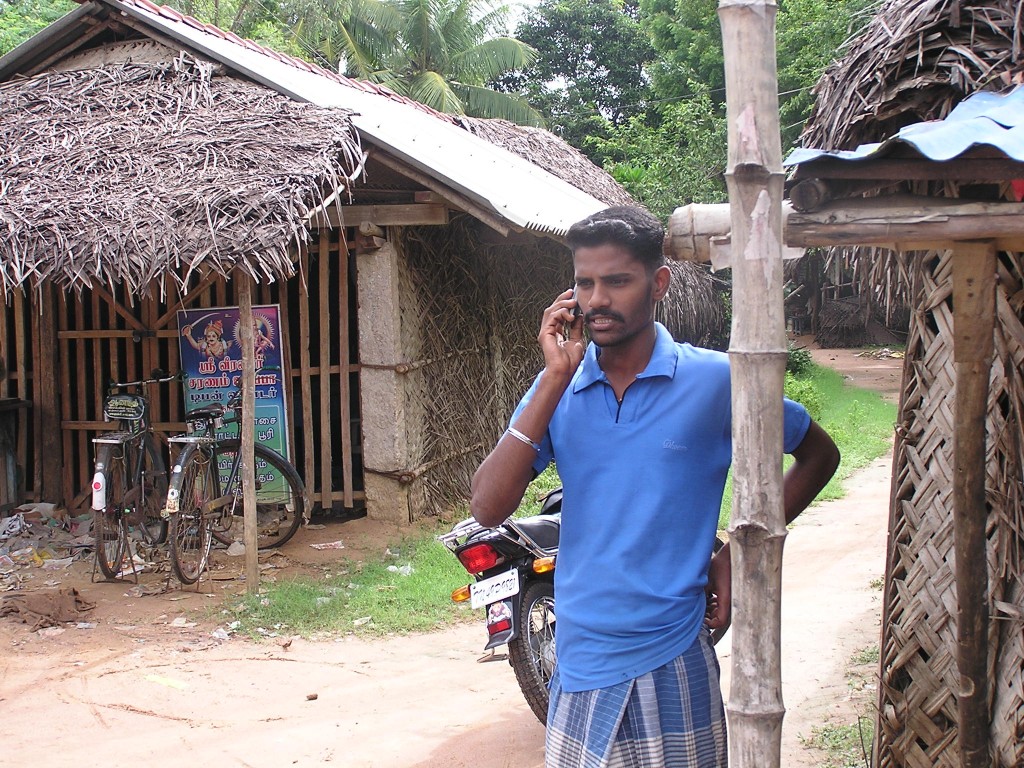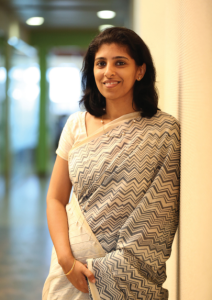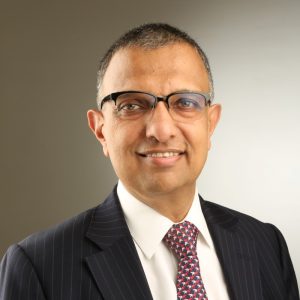Suyash Rai of IFMR Finance Foundation interviews Umesh Sachdev, CEO, Uniphore Software Systems about the company and its role in providing voice as a medium of authentication when it comes to enabling financial inclusion.

Tell us about the background on how this company started, and briefly about voice-based technology that is at the core of Uniphore?
It was in 2007 when me and co-founder Ravi Saraogi came to Chennai and joined RTBI. The only dream or vision that we were chasing was how do we use the mobile phone to bridge the digital divide. From our initial pilot assessments we were convinced that we were going to use voice as a medium of communication.
The initial intent was mainly to gather a list of questions, to identify broad areas for which people were seeking answers. The three broad sectors that we identified were Agriculture, Financial Services and Livelihoods. This gave us an idea as to the verticals that we could start with and we also realised that we had to automate the entire process, that’s when we started dwelling into speech recognition, IVR etc.
When we got into speech recognition we realised that the current system wasn’t perfect for Indian languages and dialects. So we went to IIT and focused on creating a speech engine that was suited to our requirements in partnership with an organisation called Nuance. It was in April 2008 that RTBI decided to incubate us and Uniphore was officially incorporated as a company.
Can you tell us a bit more about your IP and voice biometrics in the area of financial inclusion?
Among the sectors that we focus on, BFSI is one of them and Financial Inclusion is a key area. We discovered during our pilot study that apart from accessibility, authentication was key because it was handling money.
When we met a lot of banks, we realised that the PIN for mobile was not very strong and fundamentally it’s not a strong authentication system, whereas fingerprint was becoming the darling of the industry. However, because it’s biometric, we realised that we were restricting the customer to come to a particular point and do a transaction. He couldn’t do a transaction from his phone. So we worked with IIT and Nuance and came up with an IP that suited Indian voice conditions and demographics which delivers 0 FA [False Acceptance] with about 3% FR [False Rejection] in the field which is primarily acceptable to a lot of banks.
This combined with speech recognition allows us to be able to deploy a complete banking suite on speech, so authentication including transactions, happen in 11 languages today, both at the BC as an assisted model or as a self-service sitting at home making payments etc.
Today the larger deployment in this space covers 50,000 customers acquired in the last eight months. In this, Sub-K is the BC and the 3 banks are Ratnakar, Axis and Syndicate. Citibank is going to be added soon. We are expecting a quantum jump to 7 million enrollments in this fiscal.
Can you give us a sense of the profile of these 50,000 customers in this space?
These are all villagers, hitherto unbanked. These were opened by Sub-K, which is the BC to the 3 banks I had mentioned earlier, doing about 6 to 7 thousand transactions a day.
Based on your 50,000 customers what is latest false acceptance rate and false rejection rate?
False acceptance from day zero has been recorded as zero. As regards false rejections, there has been tremendous learning. When we launched in October these rates were as high as 18 percent and today they are down to 3 percent for the last 3 months. There has been learning on the technology side in terms of how to enroll, how to transact, in which conditions.
So one interesting example that we saw was when one customer had enrolled with a rooster in the background and this mandated him to always authenticate with the rooster in the background! This clearly meant that the BC was not trained enough because ultimately he has to handle the customer.
On an average what is the call duration of a voice transaction?
I think the target initially was to do most transactions within a minute, and am happy to say that most transactions happen within 30-40 seconds. Of course it does involve that initial learning curve.
Are you seeing a lot of customers actually transacting on their own or they come to the BC?
They still come to the BC and there are multiple reasons for this. The BC that we partnered with is not promoting self-service as much because the first attempt is to increase the footfall at the BC. The BC, even though we may decide to incentivise him on self-service transactions, it will take some time for him to not feel threatened by transactions not happening at his doorsteps.
What about the economics of this in terms of transaction charge?
The transaction cost can be viewed in two ways. There is the airtime charge and there is the cost of the using the backend infrastructure that includes voice biometrics, IVR, and which may also include core banking etc.
So the business model that most banks are comfortable to adopt is to charge the customer a fee per transaction and of that fee a portion goes to servicing the transaction – towards the infrastructure, the service provider. On the airtime charges we are trying to work out with the various telecom companies and have been able to successfully cut down the airtime charges for the BC at least for the assisted transaction.
We are, in the future, targeting sub 10 paise per transaction cost; of course volumes will be the largest drivers.
Staying with the financial inclusion issue, can you please reflect on the other technologies presently available for authentication and transactions?
Within mobile there are multiple options, so there is the option of the USSD (Unstructured Supplementary Service Data); there is the option of using application on the phone using GPRS; and the third broad option today is voice. Now, applications on the phone even in urban India have not taken off fairly highly.
USSD is simple enough, we have seen evidence of customers being able to use it easily once trained. But again it’s a non-biometric authentication that happens on that technology. We are also seeing that there is still a initial adoption curve where the customer needs to be trained to enter digits in English necessarily to be able to complete a transaction.
So the place where we have a strong conviction is that voice allows biometric authentication and that it also allows local language conversation which intuitively is natural to most Indians irrespective of their level of literacy.
So these options exist in the market and I think it is the market that will decide which of the above scales up in the future. Everything co-exists today simply because nobody has reached the number of customers that need to be reached, so the market is absolutely open.
This brings us to the question of UID compatibility?
All the stakeholders realise that going forward mobile phones are going to be key enablers of financial inclusion, so it is left to UIDAI to figure out a strategy to integrate with mobile phones. So while it is good to say that mico-atm is UID compatible, you are still not enabling the mobile customer to transact. So UID is mindful of this fact, as we understand, and we have spoken to them. Voice biometric is also one of their considerations as of today.
What are the key technology changes that you see in this space going forward?
One is that voice technologies are on natural evolution curve; even as we speak the technologies are evolving both on the biometric side and speech recognition side. So biometric, I think the changes will not be as drastic or as visible to us, they will just go on improving the core technologies, making them more resistant to noise and various demographics that we are beginning to experience.
On speech recognition, the next frontier is to move towards open-speech where even a sentence or natural conversation could be deciphered. That is still some distance away in the future.
What are the biggest risks that you see?
Competition from other technologies is a risk, but then, we are not too worried because the market is just too big – let us get to at least 50 percent of the market first and then worry about competition. Today we are happy that we are not the only ones fighting this battle and the space has relatively opened up, today it’s fairly stable and terms are well laid out for people like us. So I think we don’t see too many drastic risks in the next 2-3 years.
What are your future plans for Uniphore?
In this sector our immediate challenge is to scale up for the mass usage that we are going to experience this year. So on one hand we are strengthening our customer base with banks and BCs, on the other hand we are aggregating a lot of services on the platform that are relevant to the customer and the BC and can be sold through the same channel without any difference in the way of communication.



